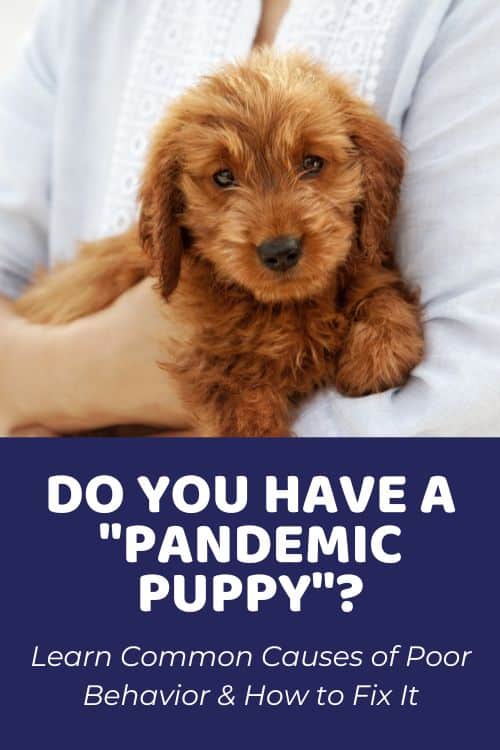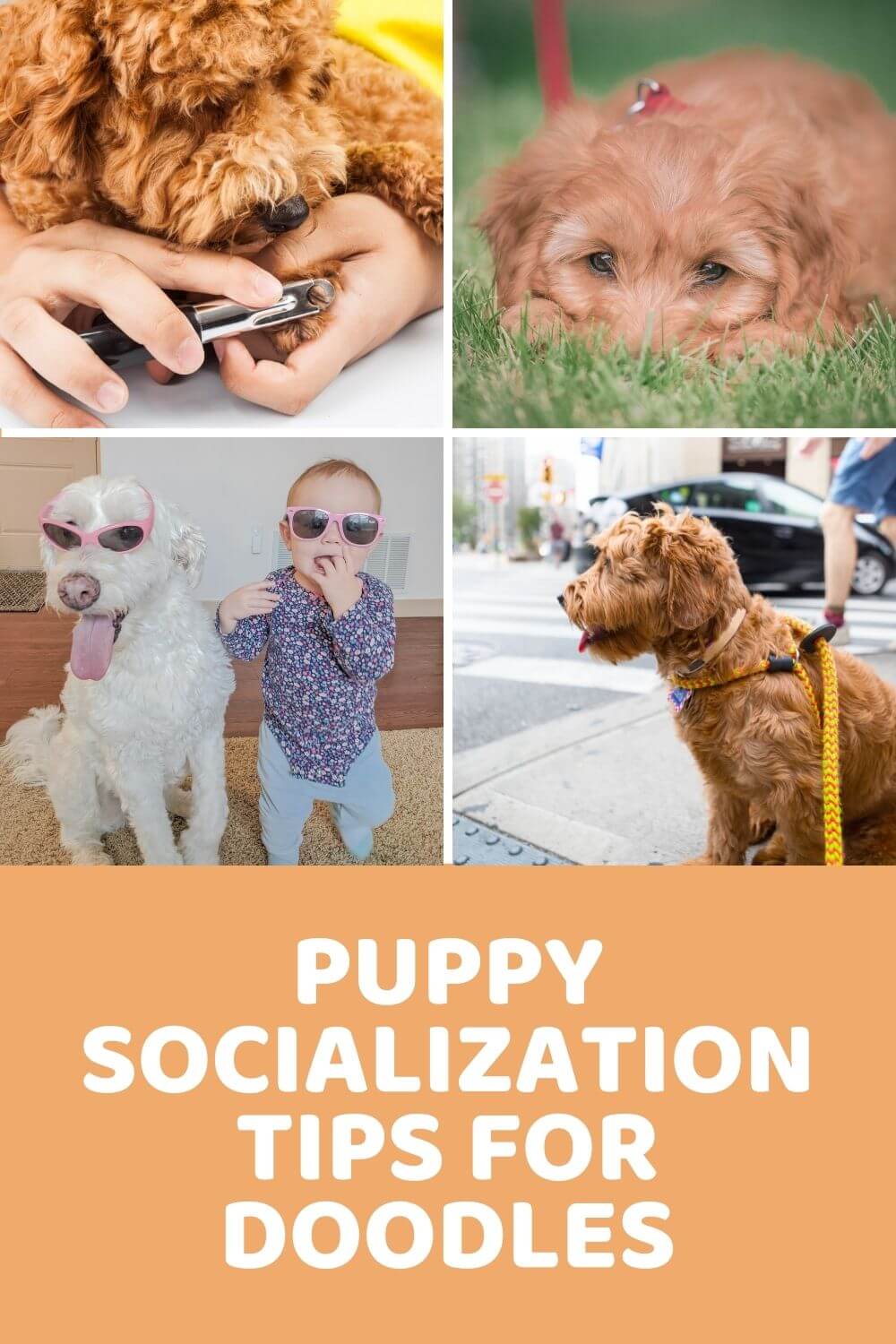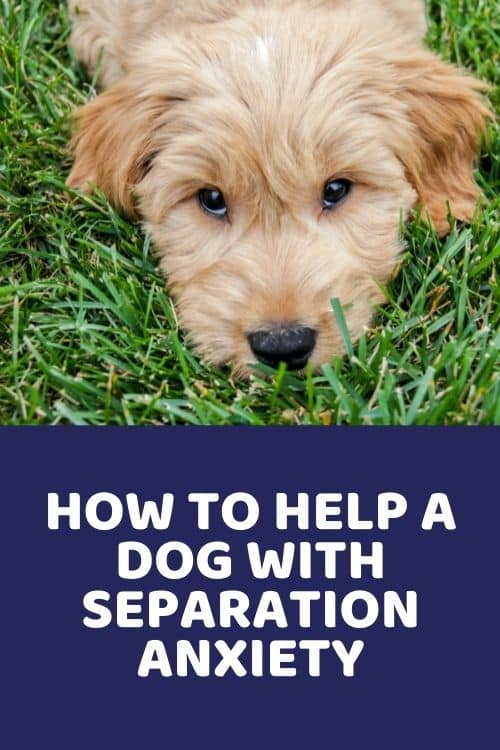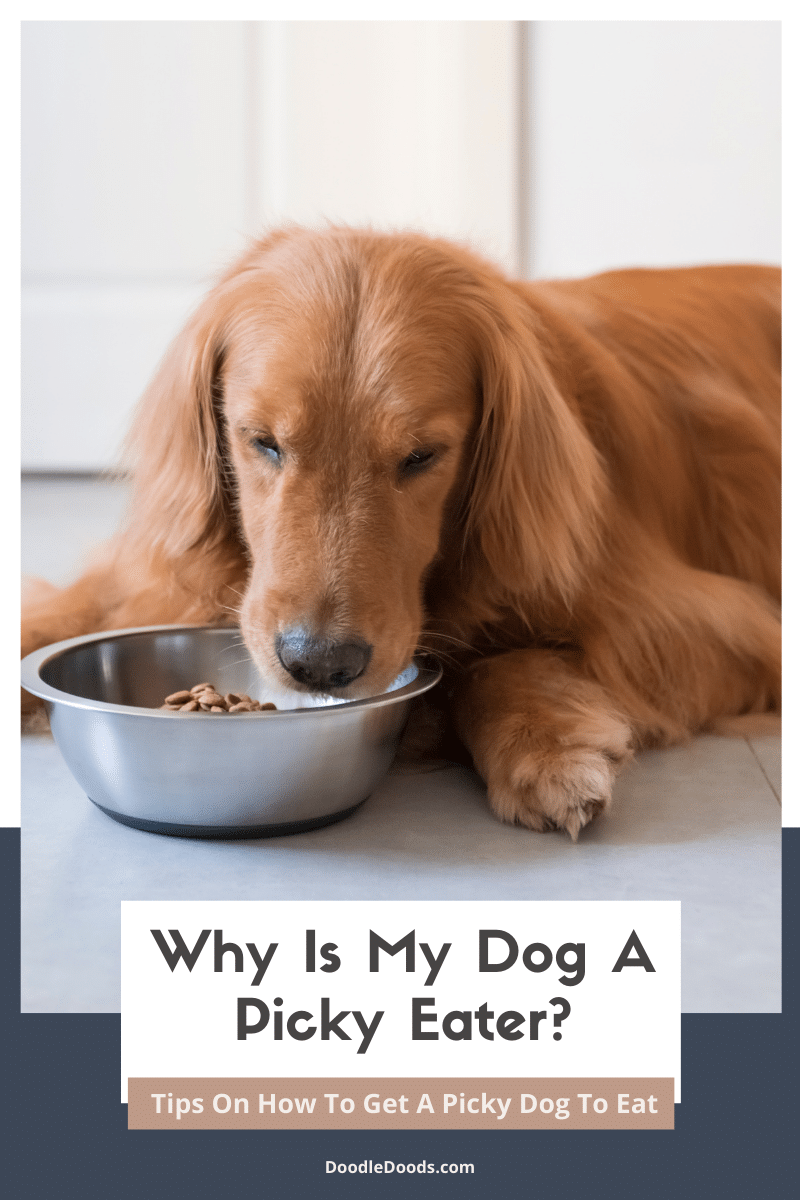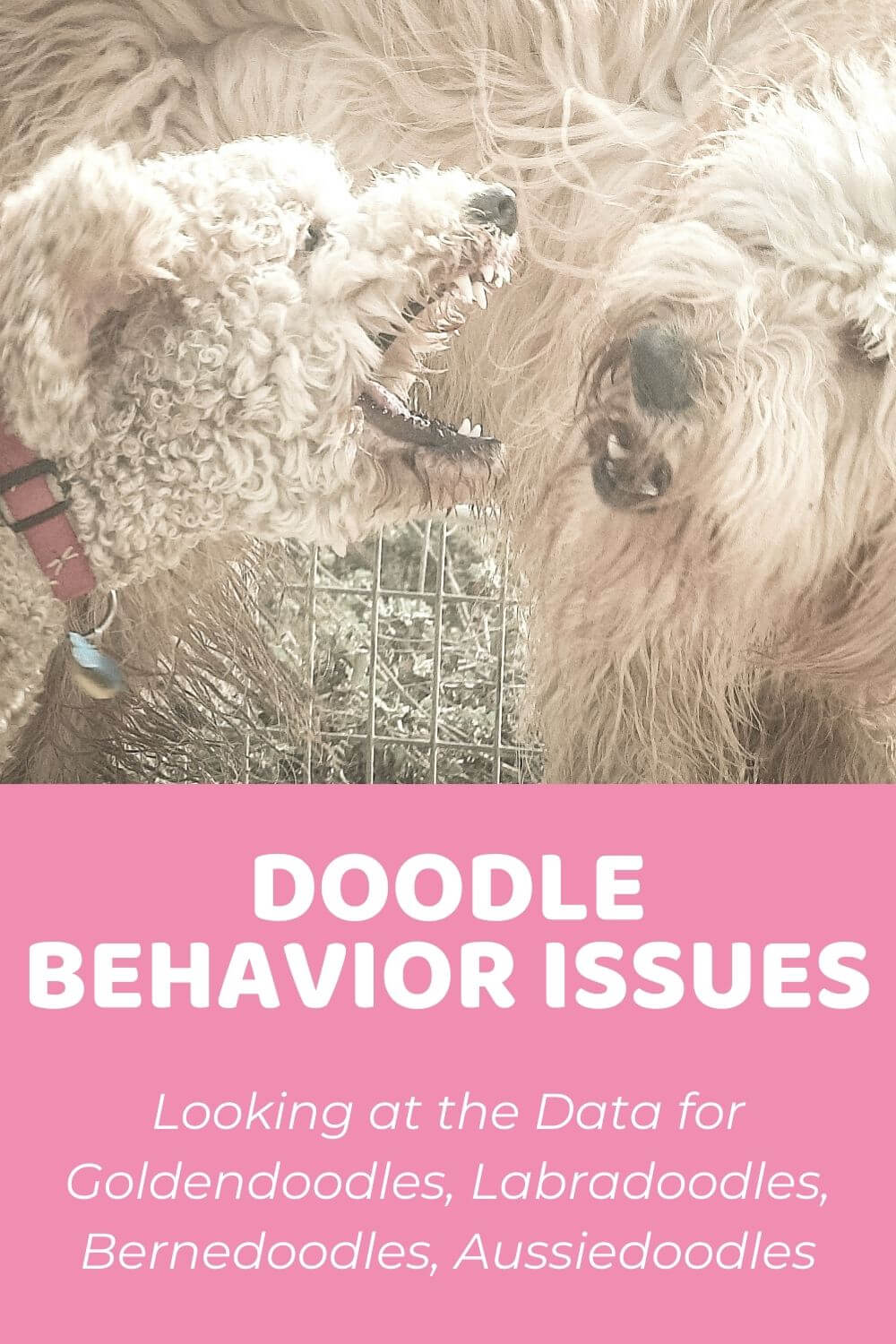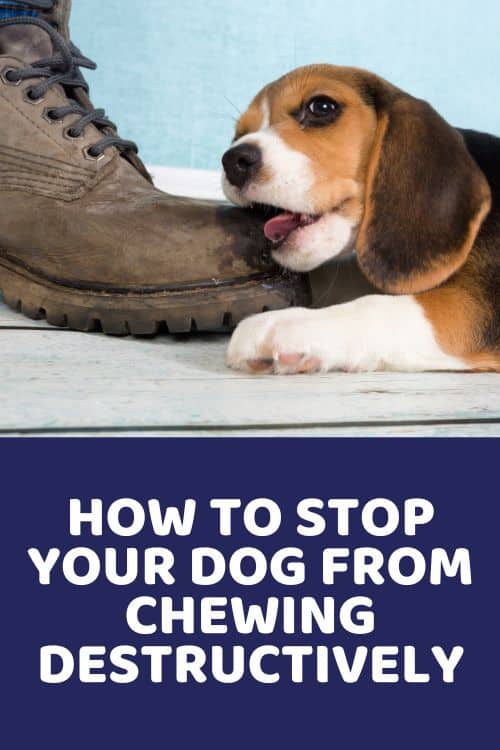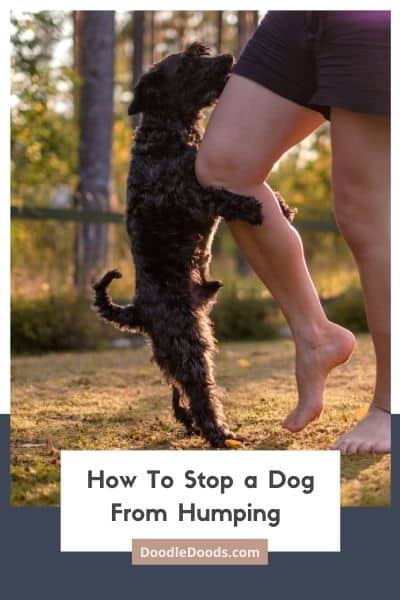The pandemic period saw unprecedented numbers of puppy adoptions. Working from home provided the perfect setup for taking on this new responsibility. At the same time, various websites and news outlets were expounding on the many mental health benefits of owning a dog. As such, approximately 3 million new U.S. pets were purchased or adopted during the height of COVID-19.
Yet, with social distancing rapidly becoming a thing of the past, people are noticing that all is not well with their now unruly teenage or mardy young adult dog. While at home with their family, they might be the most loving and sweet-tempered of pets – seemingly happy and well-adjusted in every way, but when confronted with new people or situations, their behavior can change in an instant, and not in a good way!
If you have been struggling with a fearful, bad-tempered, or overly excitable younger Doodle but have been at a loss to explain their curiously changeable behavior, you could very well have a “Pandemic Puppy” on your hands. Let’s discuss.
Table of Contents
- What Exactly is a Pandemic Puppy?
- The Importance of Early Socialization
- Sure Signs You’re Dealing With a Pandemic Puppy
- How To Help Your Pandemic Puppy
What Exactly is a Pandemic Puppy?
Dogs born and adopted during lockdown had a vastly different early experience from all the dogs that came before them. While they may have enjoyed more time with their families, time spent in the outside world was much more limited. Some of these pups may never have come into contact with an adult dog unrelated to them; others will have had no experience with unfamiliar people or even with children until the lockdown was done.
When normality resumed, these dogs were suddenly forced to adapt to an entirely new situation – one considerably different from anything they had ever known. With streets and parks suddenly much busier, with more cars and noise and people going about the business of living, there were a whole host of new sights, sounds, and smells for them to try to understand. On the whole Pandemic Pups haven’t done too well with this.
That this is a significant and country-wide problem is clear enough. Recent estimates suggest that 73% of first-time dog owners who adopted a puppy during the pandemic have at least considered rehoming them or turning them in to a shelter. While other, more experienced owners are grappling to understand their problem pets. Social media sites abound with those seeking advice on dealing with unexpected, unwanted behaviors.
The Importance of Early Socialization
The problem facing these unfortunate animals is that they never received much-needed socialization. This vital part of your pup’s early months helps them understand how to act in certain situations (alongside proper training, of course) and allows them to feel comfortable enough to manage their behavior correctly. The instinct common to all animals is to fear the unknown – this is a matter of basic survival. However, the more familiar something becomes, the less threatening it will seem.
In this way, exposing your pet to other animals, people, places, and experiences is crucial for their development. It helps to build their confidence in the world around them, making it less likely that puppies grow up to be timid, anxious, fearful, withdrawn, or even aggressive adult dogs. It teaches them that, for the most part, they don’t need to worry about most of the things they will encounter daily.
So, while Pandemic Pups will have learned the basic business of being a dog from their mom and siblings and later learned to feel safe and happy in their adopted families, social interactions beyond this are unfamiliar and thus uncomfortable for them. The sad truth is that dogs that weren’t placed in new situations simply cannot cope with them. They tend to be explosively reactive, becoming overly excited to the point of disruption, fearful and avoidant, or even loud and snappy.
The Critical Period
While socialization occurs right through your hound’s earliest years, the first three months seem particularly important. Studies looking at the impact of puppy socialization on adult behavior indicate that limited exposure to new experiences when the dog is between 7–16 weeks can increase the probability of a fearful pup. Issues that can arise include noise phobias as well as social fearfulness of other dogs and strangers. Furthermore, poor socialization has been directly linked to aggressive behavior in dogs.
So what if your dog has missed this critical developmental window? Are owners that adopted during social distancing raising a generation of doomed-to-be-antisocial dogs?
Sure Signs You’re Dealing With a Pandemic Puppy
The good news is, just because your fur baby is from Generation PP doesn’t mean they necessarily belong to the category. That being said, the prolonged period of reduced social contact has undoubtedly had consequences for all pets (and all people too). Gaining back rusty social skills will take time, practice, and patience. Even your pre-pandemic pet might have picked up a few quirks that can be ironed out without too much effort.
Pandemic Pup problems, though, are a little more extreme. Time and patience simply won’t cut it for these dogs. After all, how can they expect to adjust back to something they have never actually known? This means that without proper correction, you can only expect to see their problem behaviors getting worse. Highlighting the importance of knowing whether your pal has “Covid Canine Syndrome.”
As this can look different in different breeds (depending on their natural fear response), this isn’t quite as easy as it seems. However, there are certain common issues to look out for, such as:
- Extreme leash pulling everywhere you go
- Lunging and barking at passersby on the street
- Acting aggressively toward other dogs out in the park
- Jumping on anybody who walks through the door
- Cowering and hiding away from people or other dogs
- Alarm barking, growling, snarking, and even biting.
Pandemic Puppies are all far more likely to suffer from separation anxiety and the associated negative behaviors. Remember that these dogs were often never left alone for extended periods during their early years.
How To Help Your Pandemic Puppy
Developing the kind of social skills formed from your pet’s earliest interactions later on in their life is not going to be easy, BUT all is not lost. While the techniques you use to correct this issue will look somewhat different from the ones used in initial socialization, and, unfortunately, results will take far longer to see, you and your pup can move forward from here. That being said, the longer bad habits are in place, the more challenging it is to correct them. So, don’t wait. Act now!
Your pooch will need a combination of counter-conditioning and desensitization training. This involves gradually introducing them to new situations and attempting to alter their emotional response to these. In essence, what you’re doing is helping your pal to develop positive associations with things they already have negative associations with. Important to remember when doing this is to never apply negative consequences to your dog’s actions (yanking their leash, shouting, etc.). This will only strengthen their fear.
Instead, get them used to the objects that trigger their anxious or excitable behavior by presenting low levels of these objects. Then pair that with something your dog loves. So, for instance, if your Dood barks at other dogs, take them to the park but keep a good distance away from the other dogs. Allow your guy or gal to take everything in, then present them with a treat, toy, praise, etc. Make sure to keep them “below threshold.” If they begin to display negative behaviors, move further away to avoid losing control.
Once your pup is feeling happier about the situation, you can attempt to move them a little closer to the action. What you want to avoid at all costs, though, is “flooding.” This is basically where you pop your pet right into the thick of the things that worry them – right near other dogs, unfamiliar people… While this might be an effective method for humans with phobias, on dogs, it will more than likely backfire, making them even more fearful.
The process of desensitization and counter-conditioning can take days, weeks, or even months. This will depend greatly on your individual pup, their previous experiences, and how long they have felt negatively about the object in question. Patience and consistency are key. However, if you are struggling with these techniques, if your pet starts to act out in a more aggressive way, or if you are simply seeing no improvement, it may be best to consult a professional dog trainer for further help.
Coping with unwanted canine behaviors, especially as a first-time dog owner, can often feel overwhelming. The first step to correcting these is to understand what lies beneath them. Doodles adopted during the pandemic are far more likely to be suffering from the consequences of poor early socialization. These can impact them right through their lives. However, putting effort into helping your pet view the world around them more positively can help them feel safer and more secure within it. In this way, you can reduce problem behaviors and just spend time enjoying the company of your best friend.

